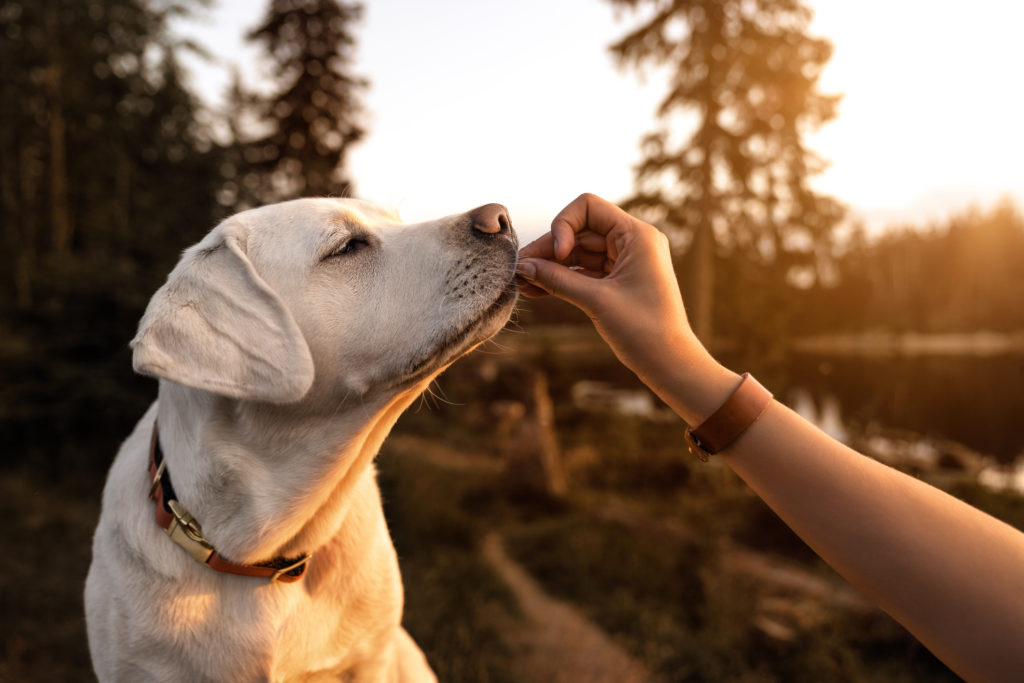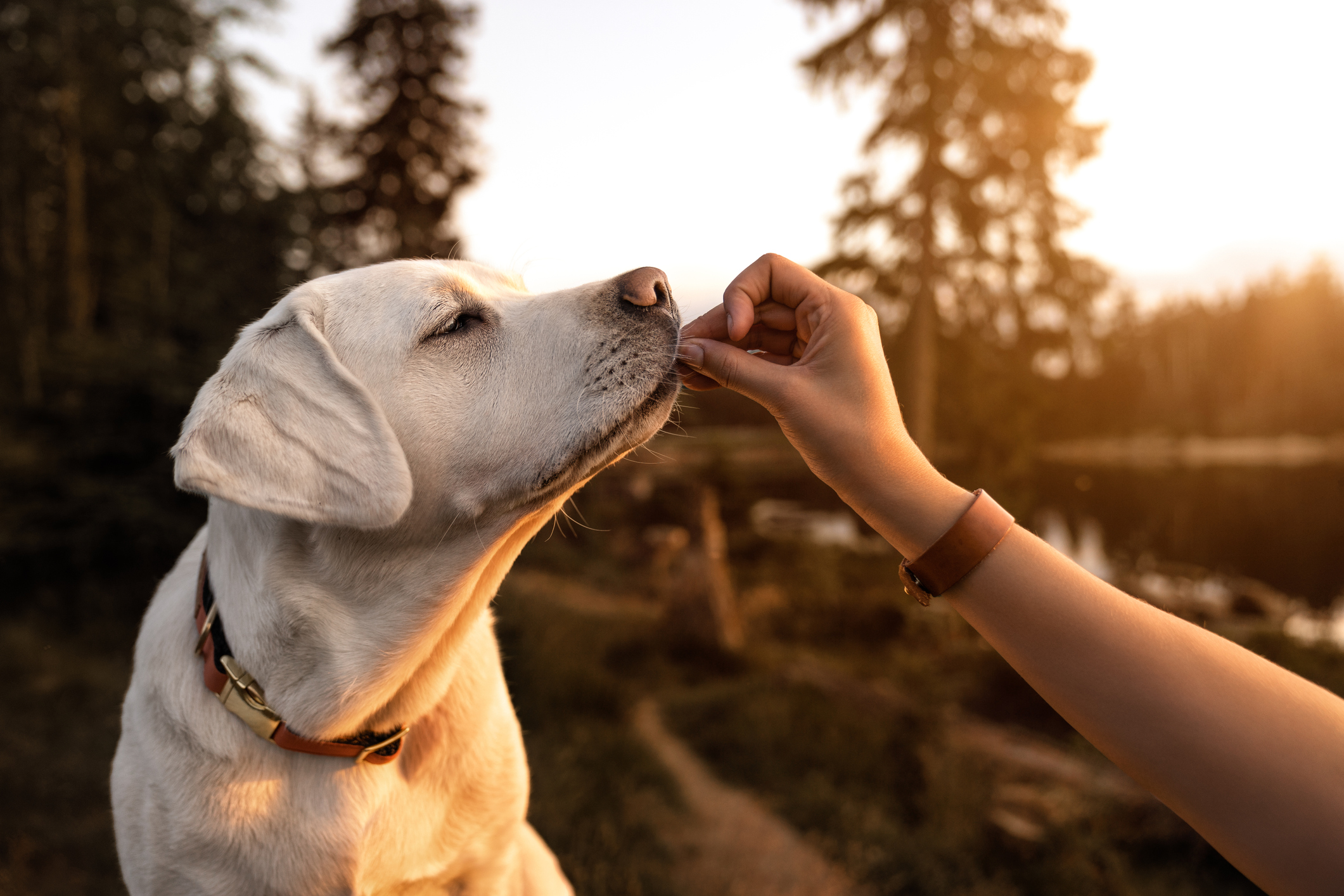[ad_1]
An important aspect of dog training is to always create an environment that sets your pet up for success. Oftentimes dog owners forget that animals cannot read our minds and then become frustrated when training does not happen as quickly – or as easily – as expected. Listed here are top tips to improve your dog’s training success.
1. Be Consistent with Reinforcement
Each individual dog has a different motivation for performing a desired task, such as food, physical attention, verbal praise, or play time. Understanding which reinforcement method is best for your dog is crucial for effective training. Additionally, the timing of reinforcement is important. Dogs that are newly learning a command should be reinforced quickly and consistently, or else they may become confused about which behavior to offer and when. Swift and reliable reinforcement will help your dog better understand expectations and in turn set up your dog for training success.
2. Practice in Varied Environments
Pet owners may become frustrated when their dog performs commands perfectly at home and in a controlled environment, only to go to a park full of distractions and have Fido act as though he has never been taught a single skill. During training it is important to practice in multiple environments, even when your dog is new to learning. The key is to manage your expectations and not expect too much too soon in distracting environments. For instance, during a walk in the park make sure your dog knows you have a high-value reward. Practice first only getting your dog’s attention and reward your pet for every positive interaction. Slowly increase the difficulty level of the desired behaviors over time before proofing your pet in a distracting environment.
3. Use Positive Reinforcement
Your dog should be excited to perform a desired behavior – not fearful or anxious and only trying to avoid a negative response. Positive reinforcement training, which involves giving a dog a positive cue such as a treat when the desired behavior is offered, has been scientifically shown to be best for the vast majority of dogs, particularly for the average household pet. Never punish your dog for giving the desired behavior too slowly or inconsistently. Instead, ask yourself whether you are properly shaping your dog’s behaviors, whether your expectations are appropriate, whether you are consistently asking the same command, and whether you are providing the appropriate reward for your dog’s personality. A fearful dog will develop at a slower rate while one that has positive associations with training will be most likely to succeed.

4. Study Behavioral Science and Operant/Classical Conditioning
Knowledge is power, both for you and your dog. Before you start training your pet, brush up on behavioral science as well as how operant and classical conditioning work in regards to dog training. Since these theories are the basis for the majority of dog training techniques, knowing why you are shaping your dog’s behavior with positive reinforcement is just as important as knowing how to train your pet.
5. Understand Canine Body Language
Although dogs cannot speak to us verbally, they will speak to us with their bodies if we know how to listen. Dogs communicate with humans via their eyes, body posture, tail position, and stance. We can use this information to know whether our dog is excited, bored, distracted, anxious, or ready to stop training for the day. A useful guide on canine body language can be found here. Pet owners who develop an understanding of what their dog is telling them not only set their pets up for training success, but also for day to day life.
6. Treat your Dog How You Would Want to be Treated
The Golden Rule does not just apply to humans. When training your dog, treat him or her how you would like to be treated. If you make a mistake at work, do you want your manager to yell, become visibly frustrated, or physically place your nose in your mistake? Or would you prefer that your supervisor praise you when you are doing a good job and reconsider what he or she could do better when a mistake is made?
7. Know When to Stop a Training Session
Training sessions can quickly become unproductive if a dog is bored, distracted, tired, or has simply done too much for the day. Knowing when to push and when to stop is imperative to training success. If your dog is missing cues, is slower to respond than normal, or is making mistakes it is best to end on a positive note with a behavior your dog has already mastered and call it a day. Oftentimes a couple 5-minute training sessions per day is more effective than a single 30-minute session.
8. Know When to Ask for Help
Finally, know when to ask for help with your dog’s training. If your dog is showing signs of aggression or anxiety, or if your dog is struggling to grasp an important concept, like recall, the best thing to do is to call on a professional for help. Sometimes, all it takes is a third party to point out an easy fix. Other times, someone with years of experience is best suited to handle a dog’s unique issues.
9. Improve Reception to Learning
Inflammation is a natural process, one that is necessary for healing acute injuries. However, chronic inflammation caused by allergies, Leaky Gut Syndrome, stress, disease, and heavy training can cause fatigue, brain fog, anxiety, joint pain, and behavioral issues in dogs, including lack of focus and slower response times in training. Removal of this inflammation can improve your dog’s training success by promoting increased receptiveness.
There are many ways to reduce chronic inflammation in dogs. Feeding a high quality, high-protein diet that is free of inflammatory ingredients such as preservatives, artificial flavors, food dyes, and fillers is a great first step. Supplements such as omega-3 fatty acids, turmeric, and animal blood proteins can also help fight inflammation without the side effects of veterinarian prescribed anti-inflammatory medications.
Overall, improving your dog’s training success starts with you. Ensuring your dog is in a low inflammatory state, is receiving proper reinforcement, and is learning in varied environments is crucial to your dog’s success rate. Additionally, understanding canine body language, the principles of conditioning, and creating a bond with your pet that helps you know when to stop and when to ask for help will improve both your and your dog’s enjoyment of training.
BIO:
Tim Mitchum, President of WINPRO®, has been with the company since 2017 and is on a mission to help dogs live their best lives at every stage. WINPRO supplements work fast to keep your dog in optimal condition and be receptive to training. Learn more about our unique dog supplements here: www.winpropet.com
[ad_2]
Source link
